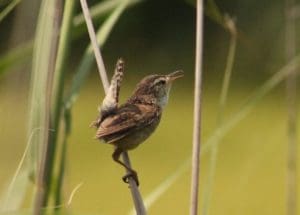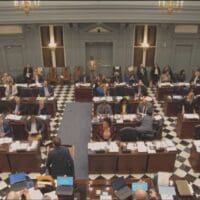
The Big Year bird count at Blackbird Creek and St. Jones will run through Dec. 31, 2022. Photo by DNREC
A state project aimed at finding as many different bird species as possible in two Delaware parks is asking for help from citizen scientists.
The Delaware National Estuarine Research Reserve wants people visiting Blackbird Creek and the St. Jones reserves to take photos of birds and upload them so they can be counted.
The year-long project will help create a snapshot of which birds visit the lands within the estuaries and will help guide conservation plans, land stewardship and restoration efforts.
The Bald Eagle, Red-Shouldered Hawk, Clapper Rail and tree swallows are among the birds that have been spotted by volunteers so far this year.
The state research reserve, which includes Blackbird Creek and St. Jones, is one of 30 in the country.
The Big Year initiative took its cut from birdwatchers, who often will challenge themselves to see or hear as many birds or bird species as possible within a single year.
Those who participate don’t have to be avid birdwatchers, but must register to participate in the citizen science project. Once registered, they can log observations into one of two apps, iNaturalist or eBird. Those interested can join any time.
There are, of course, rules:
- Birds must have been within the reserves and seen during 2022.
- Birds must have been alive, wild and unrestrained when observed.
- Diagnostic characteristics, sufficient for the recorder to identify it by species, must have been seen and/or heard and/or documented for the bird observation.
- The bird must have been observed under conditions that conform to the American Birding Association Code of Birding Ethics. In short, don’t lie or cheat by bringing the bird with you.
- Volunteers must remain in publicly accessible areas within the reserves and may not enter private properties.
- Citizen scientists should be aware that hunting seasons begin in September. In short, a birdwatcher dispatched to the great aviary in the sky by a load of buckshot will no longer be able to participate.
“Citizen science projects like our Big Year and Chronolog are ways that visitors to the reserve can help with ongoing research,” said Laurel Sullivan, education coordinator for research reserve.
Chronolog stations set up at Blackbird Creek and St. Jones allow visitors to take a photo with their smartphone and upload it into a database. The photos will be used to create a timelapse project to help observe and document environmental changes.
A few other details:
- Learn more about the trail systems at Blackbird Creek and at St. Jones.
- The St. Jones Reserve and Blackbird Creek Reserve have free parking.
- Participants may need a conservation access pass to park on state wildlife areas (e.g., the Ted Harvey Conservation Area).


Betsy Price is a Wilmington freelance writer who has 40 years of experience.
Share this Post








